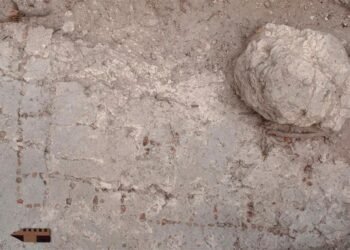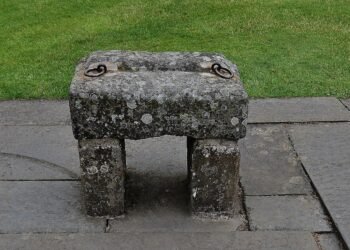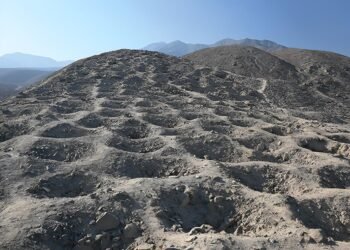A long-kept secret has finally emerged from the depths of the Mediterranean Sea, revealing a centuries-old shipwreck linked to the notorious Barbary corsairs.

The vessel, measuring approximately 13.7 meters (45 feet) in length, was discovered in 2005 by the Florida-based company Odyssey Marine Exploration (OME) at a depth of about 823 meters (2,700 feet) in international waters between Morocco and Spain. Despite the significant find, the discovery was kept under wraps until recently, when it was featured in the summer 2024 issue of Wreckwatch magazine.
The ship, manned by Barbary corsairs, Muslim pirates, and privateers who operated from the coast of North Africa, was a significant threat to European maritime activities in the post-medieval era. The corsairs were notorious for their ruthless attacks on European ships and coastal settlements, often taking captives to ransom for hefty fees. The newly discovered wreck has been linked to Algiers, the capital of Algeria, which was once a bustling hub for Barbary piracy.
Greg Stemm, director of Seascape Artifact Exhibits Inc. and former chairman of Odyssey told Newsweek: “The threat of Algiers’ corsairs was an everyday terror for the West. The shipwreck found in deep waters is a precious echo of one of the western Mediterranean’s great maritime horrors.”

Sean Kingsley, editor-in-chief of Wreckwatch magazine, elaborated on the prominence of Algiers in piracy. “Less famous than the pirates of the Caribbean, the corsair capital of Algiers turned to piracy far earlier and was a much bigger business. From 1525 to 1830, an entire city of 60,000 ‘rogues and renegadoes’ lived by the sword,” Kingsley said. He further explained that Barbary pirates raided as far north as southern England, enslaving captives and demanding ransoms, which made piracy a daily hazard for Western traders.
The shipwreck’s discovery was a serendipitous byproduct of Odyssey’s search for the HMS Sussex, an English flagship lost in 1694. While using the advanced remotely operated vehicle Zeus from their 250-foot research ship Odyssey Explorer, the team stumbled upon the corsair vessel. Over the years, Odyssey Marine has uncovered over 300 shipwrecks, but this find stands out due to its direct connection to Algiers, marking the first such discovery.

The preservation of the wreck is exceptional, with the lower third of the hull surviving undisturbed by divers or fishing trawlers. However, the upper parts were likely destroyed by shipworms, a common issue in the Mediterranean. The ship’s heavy armament, including muskets, four large cannons, and 10 swivel guns, was a defining feature that confirmed its pirate origins. “Two defining characteristics of pirate ships are heavy weapons and cosmopolitan cultural contents—assembled from the many prizes taken,” Kingsley noted.
Artifacts such as pottery and glassware found at the site have provided clues about the ship’s origin and date. The pottery closely parallels 18th-century ceramics excavated from Martyrs’ Square in Algiers, and the glass bottles date from 1740-1760, suggesting the ship sank around 1760.
“Most of the pottery has exact parallels in the 18th-century ceramics excavated during rescue work in Martyrs’ Square in Algiers,” Kingsley explained. “The Ottoman bowls on the wreck stopped being made in Turkey around 1755. The tightest dating comes from the glass bottles that were blown, at latest, 1740-1760. So the ship can’t postdate 1760.”
It is believed that the corsair ship was en route to Spain, aiming to raid ships and capture slaves for ransom, when it succumbed to an unexpected storm. “The small ship almost certainly succumbed to a storm that came out of nowhere. The bold and brave corsair was punching above its weight in unforgiving seas,” Kingsley said.
Algiers’ prominence as a piracy hub waned following repeated European assaults, culminating in its conquest by France in 1830.























